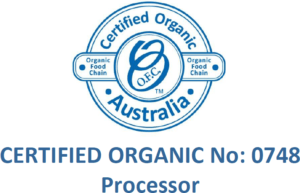Were our grand parents right… Do we need roughage to keep regular?… We all know we need it but how do we get enough fibre to keep us healthy?
Fibre is usually plant material passing through the body insoluble & undigested, (ie. whole grains) thus acting like a bottlebrush, picking up waste & dumping it. It works in conjunction with soluble fibre, (ie cereals & porridge) soaking up water & making waste material softer & easier to move through the system. To work their best fibre needs water in any form-filtered water is best but also any water containing foods, juice & herbal teas. The latest dietary recommendations (2007) suggest women should be eating a minimum of 25g fibre per day, & men 30g+ per day to prevent lifestyle diseases. In a recent study in the Int. Journal of Epidemiology Jan 07: researchers found that in pre-menopausal women, a higher fibre intake (30gm+ per day of fruit & cereals), significantly reduced the risk of breast cancer.
Fibre Rich Tips for Breakfast
- Start by making sure you don’t skip breakfast.
- Breakfast cereals/porridge may be topped with seasonal,& stewed fruit.
- Mix high and low fibre cereals together eg weetbix, cornflakes & muesli
- Use organic spelt, wholemeal or wholegrain toast. Baked beans on whole grain toast is great for fibre.
- Try bran/wholegrain muffins rather than white muffins.
- Peanut butter is high in fibre in preference to sugary jams or spreads.
- If you avoid gluten or wheat, fruit salad is high in fibre & a great way to start the day.
Fibre Tips for Lunch & Light Meals
- Rye crispbreads offer more fibre than plainer varieties like water or rice crackers. Try wholegrain rice crackers.
- Add fibre rich salad or vegetables to sandwiches & wraps eg. Grated carrot, sliced capsicum, beetroot, avocado, tomato & lettuce.
- Chop celery & carrot sticks & combine with your favourite dip-hummus.
- Toasted seeds such as pumpkin, sunflower, sesame are tasty & add fibre… sprinkle over salads/ meals.
- Roasted/baked kumara & pumpkin with feta cheese & toasted seeds.
- Freshly cooked corn or tin corn is high in fibre…rinse well.
- Brown rice & pasta are higher in fibre than their white counterparts.
- Potatoes washed and cooked in their skins are high in fibre.
- Add lentils, chickpeas or beans to a casserole.
- Homemade soup is an easy high fibre meal as well as great for using up leftover meats & vegetables.
- A handful of dried fruit or nuts like almonds are quick and easy for munching, or high fibre muesli bars- check they are low in fat & sugar, as fibre contents can vary depending on brands & product.
- Fruit in any form is great for fibre, or add fruit & toasted muesli to yoghurt….kiwi fruit, apple, apricots, banana.


